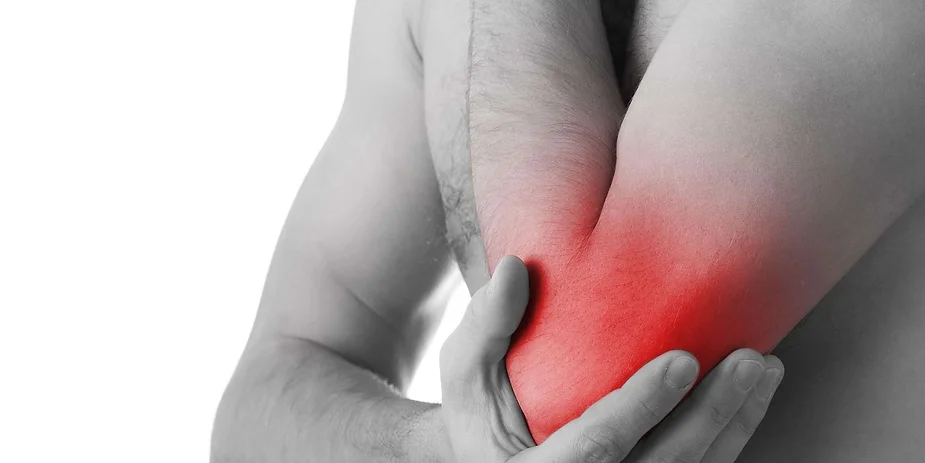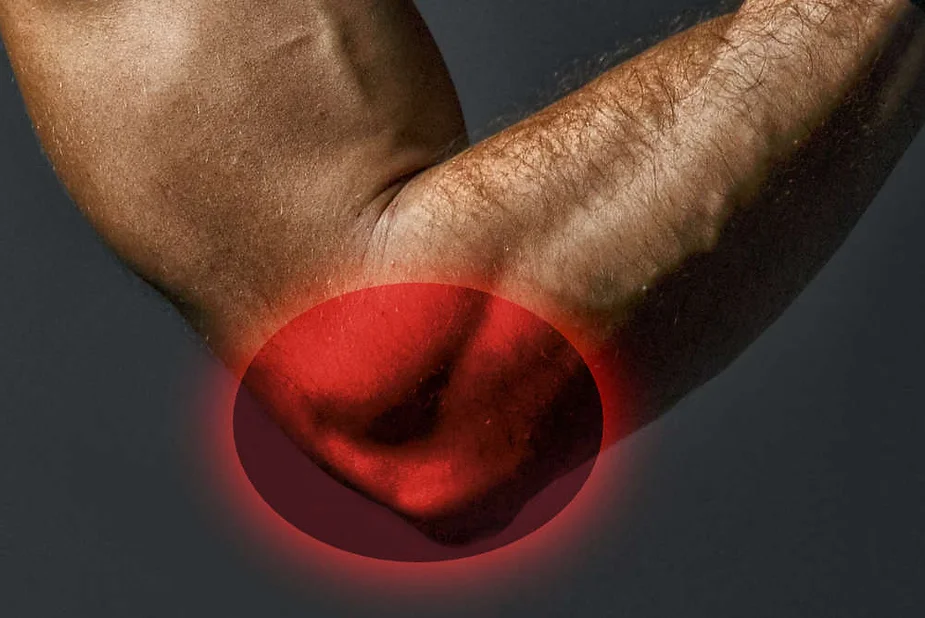Introduction
Tennis elbow is also known as lateral epicondylitis. It is a common condition that affects not only tennis players but also a wide range of individuals who perform repetitive arm movements. The pain of tennis elbow can be debilitating, making it difficult to perform everyday activities. Fortunately, there are several treatments and therapies available to help alleviate the symptoms and promote healing.
From traditional methods such as rest, ice, and over-the-counter pain medication to more advanced options like physical therapy, corticosteroid injections, and even surgery, there are numerous avenues for the treatment of tennis elbow. In this article, we will explore the various options for managing and ultimately finding a cure for tennis elbow.
Symptoms of Tennis Elbow or Lateral Epicondylitis
Do you feel a sharp elbow pain in the outside when you make even the slightest movements? If so, you may be experiencing Tennis Elbow. It’s an overuse injury caused by repetitive use of the arm muscles and tendons that attach to the elbow joint, and is quite common among tennis players—hence its name!
Here are some of the main symptoms that may indicate you’re suffering from Tennis Elbow:
Pain or tenderness on the outside of your elbow.
Pain when gripping, picking up, or reaching for objects.
Tingling sensations in your forearm and wrist.
Pain when bending your wrist backward.
If you experience any of these symptoms, it’s important to seek medical attention as soon as possible. In most cases, Tennis Elbow can be treated successfully through rest, ice therapy, physical therapy, medications or even surgery if necessary. Don’t let this annoying condition limit your life; treat it early and get back to enjoying yourself in no time!
Causes of Tennis Elbow
Tennis elbow is an inflammation of the ligaments and tendons around the elbow joint caused by repetitive motions. At its worst, it can cause immense discomfort that radiates from the elbow and worsens when gripping or lifting objects.
The most common cause of tennis elbow is overuse of the forearm and elbow muscles, which happens when playing tennis.
It’s also common in other racket sports, such as badminton, squash, and racquetball.
Even everyday activities like painting walls, wielding a hammer or using scissors can aggravate this condition if done repeatedly.
In some cases, tennis elbow can be caused by poor technique or incorrect equipment, such as grip size or string tension.
It’s important to take regular breaks from activities that require repetitive forearm movement, as this will help reduce the risk of injury.
A physical therapist can help you identify any technique flaws you might have so you can correct them quickly and reduce your chances of developing tennis elbow.
Diagnosing Tennis Elbow
If you suspect you might have a Tennis Elbow, don’t hesitate to seek medical help. Early diagnosis and treatment are essential for reducing the intensity of symptoms and preventing further damage. Your physician will typically start by taking a comprehensive medical history and doing a physical exam of your elbow and arm. From there, they may recommend imaging tests such as an X-ray or MRI scan to evaluate the soft tissue damage. Treatment may include rest, ice, medications, and physical therapy exercises.

Tennis Elbow Treatments and Therapies
1. Steroid Injections For Tennis Elbow
Steroid injections are a powerful form of medication with a range of side effects, including potential damage to tendons and ligaments or even infection if not administered properly. Moreover, while they provide short-term relief, steroid injections cannot treat the underlying cause of the condition.
For this reason, it’s important to consult with your doctor first before opting for this form of treatment, ensuring all the facts are taken into account. Tennis elbow doesn’t have to mean career-ending pain. With the right combination of treatments and proper management, you can get back in the game sooner rather than later. So don’t let the discomfort sideline you – look into all your treatment options and talk to your doctor to find out what works best for you.
2. Nonsurgical Tennis Elbow Treatment
There are a variety of effective nonsurgical treatments available for tennis elbow. These treatments can help reduce inflammation, relieve pain, and strengthen the muscles and tendons in the area. Some of these treatments include anti-inflammatory medications, physical therapy exercises, counterforce braces, and extracorporeal shockwave therapy. Depending on your situation, your doctor may recommend a combination of treatments to give you the best chance of success.
It’s important to remember that healing takes time – no matter what treatment you choose. So don’t forget to give yourself some grace as you go through this process! By taking care of yourself and sticking to your treatment plan, you can get back to peak performance in no time.
3. Shockwave Therapy For Tennis Elbow
Shockwave therapy uses sound waves to stimulate and regenerate tissue in the tendons and muscles surrounding the elbow joint, bringing relief without the need for surgery. During treatment, a handheld device containing a pressure wave generator is used to deliver the shockwaves. This induces an intense, yet short-lived discomfort as the sound waves penetrate the affected area. But don’t worry – after a few minutes of treatment it’s all over!
4. Physiotherapy For Tennis Elbow
Physiotherapy can provide relief from the inflammation, soreness and pain caused by tennis elbow. Through a combination of treatments such as massage, taping, stretching, strengthening and activity modification, a qualified physiotherapist will work with you to determine an individualised treatment plan tailored to your specific needs. In addition, they can help you develop strategies to prevent the problem from recurring in the future.
5. Surgery Treatment For Tennis Elbow
Surgery for tennis elbow is a minimally invasive outpatient procedure. During surgery, weakened tissues are removed, while healthy tendons are repaired or replaced to improve stability. Afterward, your doctor may suggest physical therapy to help with recovery and increase strength and mobility. With proper care and attention, you will soon be back on the tennis court (or anywhere else) enjoying life without the restrictions of a painful tennis elbow.

Conclusion
Tennis elbow, also known as lateral epicondylitis, is a condition that causes pain and tenderness on the outer part of the elbow. It typically affects people who engage in activities that involve repetitive arm motion, such as playing tennis or using a screwdriver. Common treatments for tennis elbow include rest, ice, and over-the-counter pain medications.
Physical therapy and exercises that strengthen the wrist and forearm muscles are also commonly used to treat tennis elbow. In more severe cases, corticosteroid injections or surgery may be necessary. If you experience pain from tennis elbow, it’s important to seek treatment and avoid activities that can worsen the condition.





